50 greatest Pixar moments
31. A whale of a time
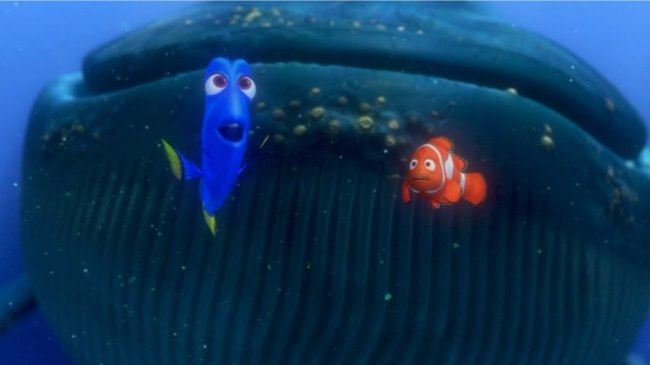
The moment: When Dory and Marlin are swallowed by a whale in Finding Nemo, it looks like game over. Good job that Dory can speak whale, then.
Why it's great: Pixar ensembles are usually so strong it's hard for a character to steal the show… but nobody told Ellen DeGeneres.
Pixar say: Ellen DeGeneres on playing Dory - "I got to love that Dory has memory loss. It makes her so innocent and optimistic. She’s like a child not a jaded adult. Having such a limited attention span makes her so childlike. It made me feel like a happy child every time I went into the studio to do a recording session."
30. Plastic corrosion awareness
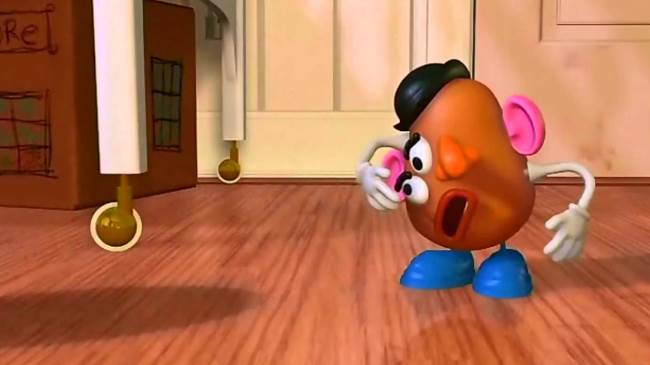
The moment: When Andy isn't looking, it turns out the gang in Toy Story likes to make jokes about Picasso and hold staff meetings: "Tuesday night's plastic corrosion awareness meeting was, I think, a big success."
Why it's great: Having sent children of all ages reeling with the awe of seeing toys come to life, Pixar sets a standard for adult-friendly wit it has never lost.
Pixar say: Co-writer Joss Whedon on the film's humour - "I think the thing that I can point at and say, 'This I am proud of,' is really the voice and the sensibility of the characters, keeping them from being that sort of old-school Disney – what my wife would refer to as 'old-man humour.' Getting a little more voice and a little more edge into the jokes and into the bits, and just helping the structure, seeing it through."
29. Puppet on a string

The moment: Unlikely culinary partners Remy and Linguini figure out how to work together in Ratatouille, when the rat discovers he can control the human's movement by manipulating Linguini's hair like a marionette.
Bringing all the latest movie news, features, and reviews to your inbox
Why it's great: Ratatouille is arguably the most left-field premise in Pixar's history, but having spent a good 40 minutes setting up the idea of a rat working in a cordon-bleu restaurant, Brad Bird has eased us into willing suspension of disbelief.
Pixar say: Brad Bird on the film's unusual genesis - "It was going to have to go into production soon and it wasn’t ready. The look was great, as was the premise, but they weren’t getting enough out of the premise. So they asked me if I would step in."
28. Fashion guru
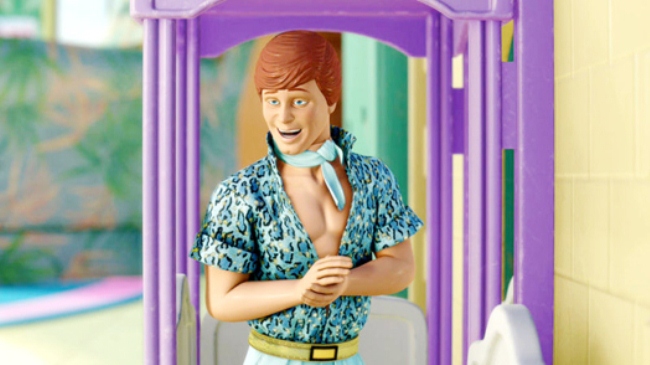
The moment: Just when Andy's toys think they've met everybody at Sunnyside in Toy Story 3, Ken - making quite the entrance - comes down from his house, locks eyes with Barbie and falls instantly in love.
Why it's great: Amazing to think that, once upon a time, Mattel wouldn't lend its brands to Pixar. Ken is a brilliant study in the ironies of playtime (a boy designed to be played with by girls!) and easily the stand-out character in Toy Story 3.
Pixar say: Lee Unkrich on Ken - "It was looking at all the different Kens and all the different fashions over the years that gave me the idea to have Ken show up in a different outfit in every scene. Every single scene he shows up in a different outfit, and I imagined this whole weird back-story – before every scene he thinks to himself 'what is the right outfit for what I am going to do?' He will match the outfit to the occasion."
27. Squirrel!
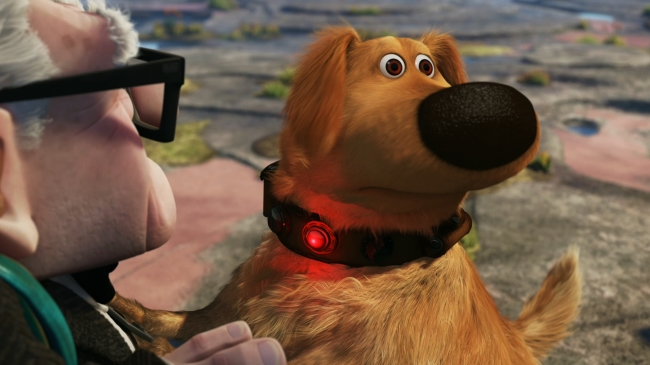
The moment: After heading Up, Carl and Russell are back on the ground in search of Paradise Falls when they meet Dug, a hyper-excited, easily distracted dog who wears a collar that can verbalise his every thought.
Why it's great: While we're also partial to bad dog Alpha, the Doberman with the dodgy collar that gives him a squeaky voice, there's nothing to beat Dug's more dog-like exuberance, voiced to perfection by co-writer Bob Peterson.
Pixar say: Bob Peterson on Dug - "The distractibility of Dug (SQUIRREL!!) is based on a game I'd play with my dogs. On a hot day the dogs would be panting to cool themselves down. So, I'd jump in and pant along with them. Then I'd stop abruptly and pretend I'd seen something important. The dogs would do the same and go to attention along with me. Long pause. Then, everyone back to panting. It was hilarious."
26. Space dance

The moment: After Wall-E completes a daring mission to rescue the priceless plant and zooms off into space using a fire extinguisher, he and EVE celebrate with a romantic dance amongst the stars.
Why it's great: Wall-E is an unashamed love story, and this is the moment where it becomes clear that Wall-E's affections are reciprocated - a gorgeous grace note amidst the pandemonium of the film's second half.
Pixar say: Andrew Stanton on EVE - "We didn’t want to literally make her be Apple, but we wanted her to feel that same design sensibility, where the functions are hidden. It’s a mystery and you’re not exactly sure how it all works, but it seems almost magical and everything is almost perfectly moulded into one another. It became obvious to us, but I wanted Steve [Jobs] to be comfortable with it and he said we should have Johnny Ive come over and see what he thinks, because he designs everything for Apple. He came over and pretty much fell in love with immediately and it was the biggest shot in the arm. He didn’t have anything to approve on, he just said, ‘I love her.’ It was a great afternoon with him that was pretty much the stamp of approval."
25. Jack-Jack's discovery

The moment: Jack-Jack has been kidnapped by Syndrome at the end of The Incredibles, with no possibility of help - so he takes matters into his own hands by revealing his superpower, morphing into a flaming devil.
Why it's great: It's an amazing triple-decker punchline to the whole film, as 1) we find out what Jack-Jack can do; 2) Syndrome is killed by his cape and 3) the kid next door witnesses the pyrotechnic carnage. As he says, "Oh man, that was totally wicked!"
Pixar say: Brad Bird on the family unit - "I tried to base the powers on family archetypes. The father is always expected to be strong, so I had him have strength. Mums are always pulled in a million different directions, so I had her be elastic. Teenagers are insecure and defensive, so I had her be invisible and have protective shields. Ten-year-old boys are hyperactive energy balls, so I had him be speed. And babies are unknown—they may have great powers, they may have none."
24. Bloopers
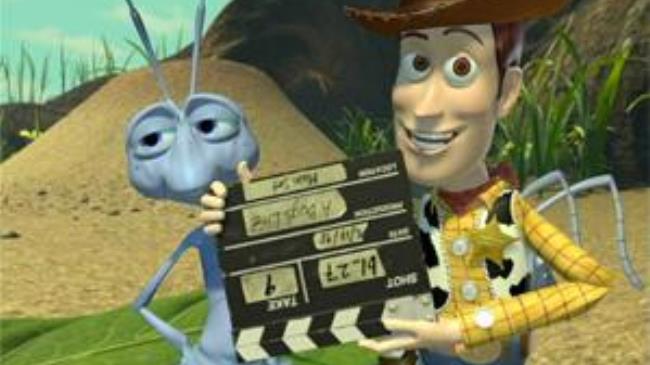
The moment: Forgotten lines, on-set accidents, boom mikes in shot... A Bug's Life reveals the hidden obstacles of 'filming' animation.
Why it's great: A crucial part of the Pixar formula in its earlier films, that obliquely endorses the behind-the-scenes craft of CGI while, paradoxically, making its pixelated heroes appear more life-like.
Pixar say: John Lasseter on the expectations following Toy Story - "It was kind of like we were making a movie in a fishbowl. There was all this pressure with stockholders and a lot of worry about the sophomore slump, but we just learned from the first one and we refined. We had a real faith in ourselves, and we decided we wanted to make this a bigger movie. We called it 'an epic of miniature proportions.'"
23. Laser envy
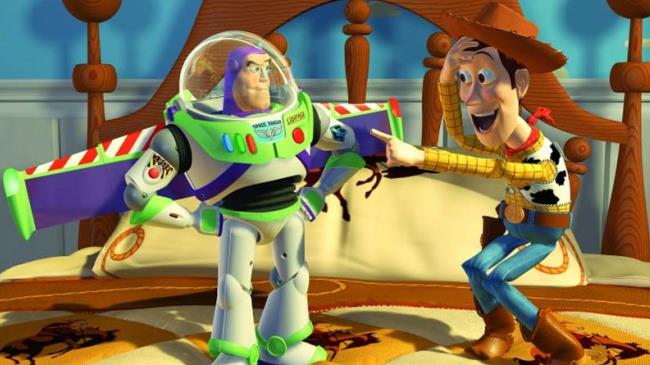
The moment: Woody goes on the warpath in Toy Story as the gang falls in love with Buzz Lightyear. As he ridicules the 'spaceman' for thinking he's a real toy, Hamm asks "What's with him?" "Laser envy," reckons Mr Potato Head.
Why it's great: Themes of rejection, jealousy, self-denial and the fickle affections of the crowd? Disney, this isn't, as Pixar rebuilds animation as existential buddy comedy.
Pixar say: John Lasseter on creating the central dynamic - "We didn’t want it to have like a good guy and a bad guy, and you know, sidekicks and all that stuff. Because that was all Disney's thing. So we started to look at different kinds of film genres and we landed upon the buddy picture. We loved The Odd Couple and The Defiant Ones and Midnight Run."
22. Return of the superheroes
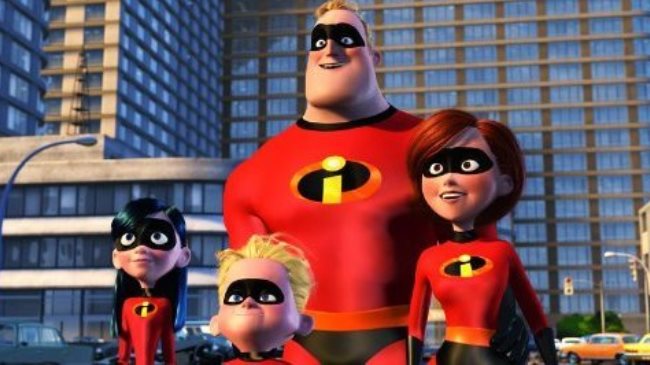
The moment: The Incredibles climaxes in a full-scale pitched battle in the streets of Metroville, as the entire family has to take on the Omnidroid.
Why it's great: You want action? Here's action. Pixar proves itself the equal of - if not better than - any of Hollywood's live-action auteurs when it comes to busting blocks.
Pixar say: Brad Bird on CG animation - "We were fighting the computer. I felt that the computer had an agenda on this film. The agenda was the computer wants to make everything look really clean, really small, really weightless-and hard. It likes hard surfaces; it doesn't like soft surfaces. And we had a whole movie where we wanted things to be big and heavy and squishy and dirty. It was like we were fighting it every step of the way."


